

Yak-3

The Yak-3 was the result of a second line of development, which based on the Yak-1, aimed at obtaining the highest possible performance with the M-105PF engine. Various improvements were embodied in an experimental aircraft the Yak-1M. The rear fuselage was cut down in the style of the Yak-7B and an all around vision cockpit canopy was fitted. The wing span was reduced by two feet and the loaded weight was reduced by 600 pounds. Trials with the 1M led to the design of the Yak-3 which was placed into production in the summer of 1943. The Yak-3 was powered by the M-105PF-2 engine rated at 1,222 h.p. for takeoff. The oil cooler intake was transferred from below the engine to the port wing root and the antenna mast was eliminated. An exceptionally fine finish was obtained on the wings by applying a thick layer of polish which proved to hold up extremely well in service use. Performance was superior to that of early Yak-9's with a maximum speed of 403 m.p.h. The handling characteristics of the Yak-3 were excellent and pilots who had flow early versions of the Spitfire claimed that the Yak-3 was lighter on the controls and smoother to fly. The stall speed was relatively high and takeoff and landing could be a problem for novice pilots. Armament consisted of one 20-mm. ShVAK cannon and two 12.7-mm. Beresin machine guns. The Yak-3 made its operational debut during the German Kursk offensive and by early 1944 several VVS fighter regiments had been equipped with the type. Such was its success that Luftwaffe pilots received instructions to avoid combat with Yakovlev fighters lacking an oil cooler beneath the nose below 5000 feet. The total production of the Yak-3 numbered 4848 aircraft by the time the last one left the factory in early 1946.
The Kit
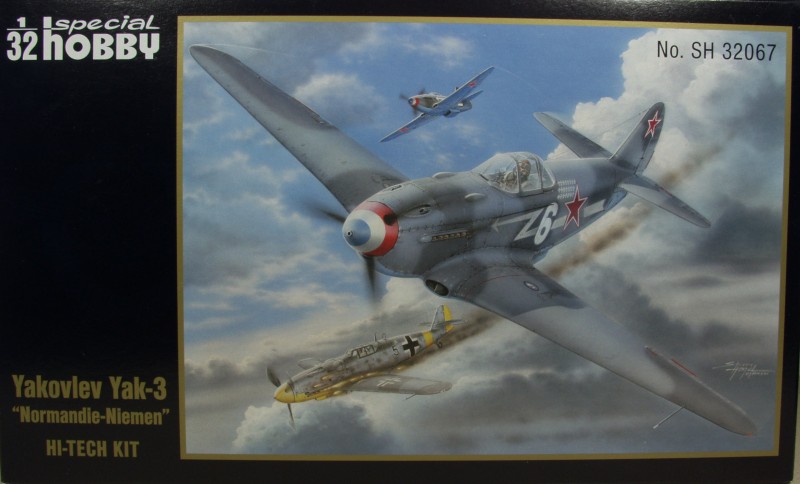
The Special Hobby kit comes in a sturdy top open tray type box with the bottom half made from thin corrugated cardboard, and some nice artwork on the top. Inside the box the main sprues are all packaged in a single resealable plastic bag. The clear parts are in a separate bag and the decals and photo etch fret are in a resealable plastic sleeve. There is also a small zip lock bag with a set of masks for the clear parts. A separate bubble pack contains some resin parts. The PE, resin and masks are the extras you get with the "HI-TECH" kit, which this is.
The main parts are molded in a gray colored plastic with a smooth semi gloss finish. The parts are crisply molded and are mostly flash free, I did see some on some of the smaller parts and most heavily on the propeller blades. Mold separation seams are fairly light, not as good as Tamiya but close. It appears that most of the ejector pin marks have been kept out of visible areas. Looking over the main airframe parts the only defect I found was a small plastic glob on the upper wing surface and it should be easily removed. Since much of the fuselage and wings were made of wood there is not as much surface detail as on all metal aircraft. The metal areas feature fine recessed panel lines, rivets and fastener detail. all very restrained and some of the rivets are quite small. The Dzus fasteners have slots in the heads. If I had any complaints it would be that the control surface demarcations should be deeper. There is some raised detail where applicable. The ailerons are molded in the neutral position, the elevators and rudder are separate pieces. The upper wing is molded in one piece that includes the cockpit floor. The lower wing is also one piece and incorporates the radiator housing.The fuselage has structural detail molded in for the tail wheel bay.
Detail wise the cockpit is built up between two tubular frames with front and back sections and the level of detail should satisfy most modelers. Only the instrument panel is a bit of a let down, looking a bit plain with just raised bezels and no instrument detail. The completed cockpit is then attached to the floor section of the wing and the fuselage set down over top of it. The gear bays in the lower wing are multi part affairs with a good level of detail as do the landing gear themselves. The gear doors have structural detail molded on the inside. There is a baffle and radiator core detail for the under fuselage radiator.
OK, lets look at the parts. Note: If you want to see some close up photos of these parts check out the first link in the Reviews section. The first sprue shown has the fuselage halves and the separate piece for over the engine area. Assuming this fits well it will eliminate a center seam in that area.
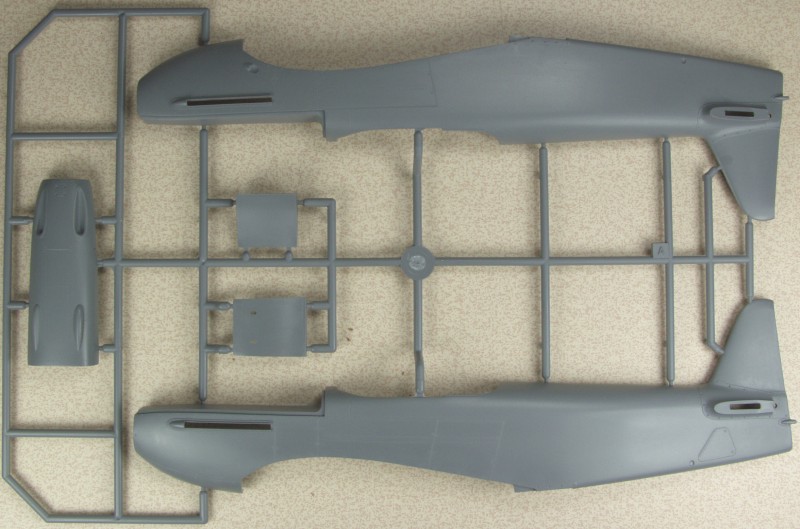
The wings were on one sprue but upper wing on mine had come detached during the kit's travels so I photographed them separately.
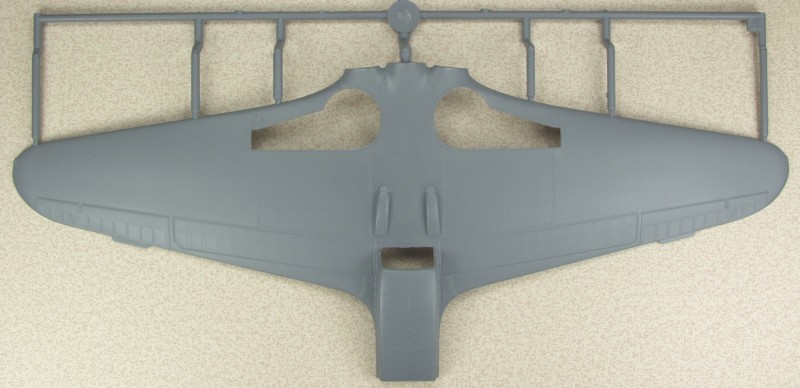
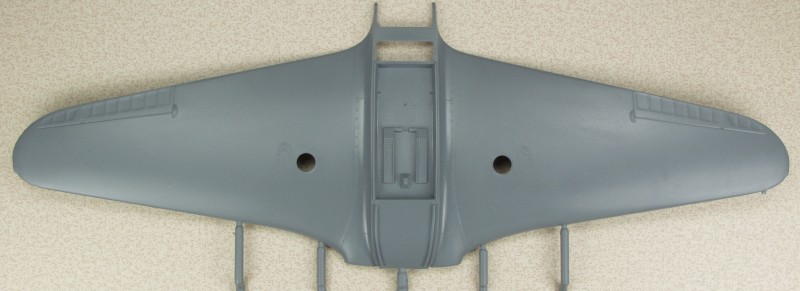
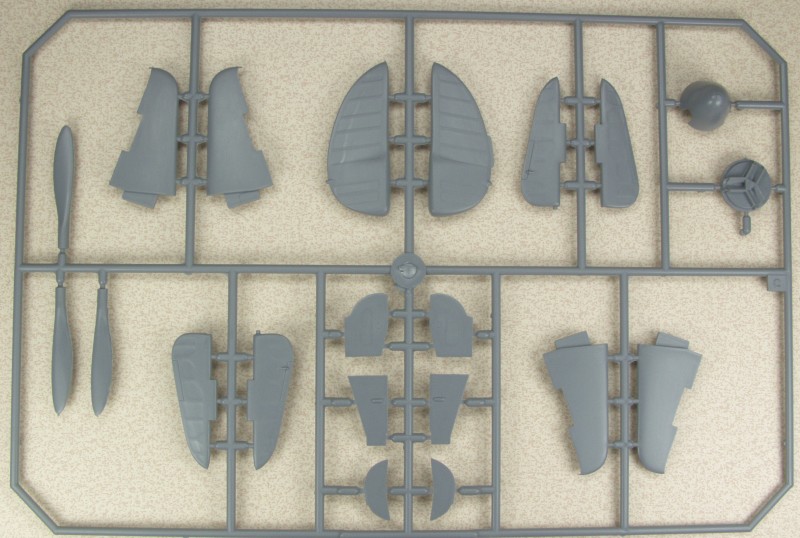
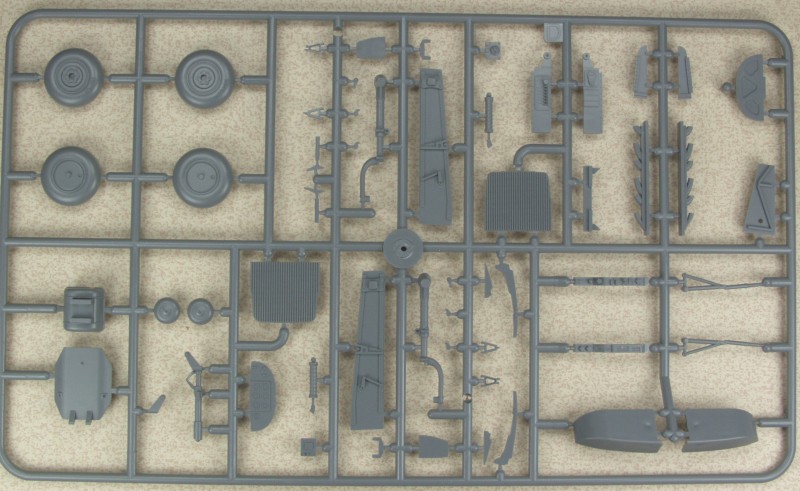
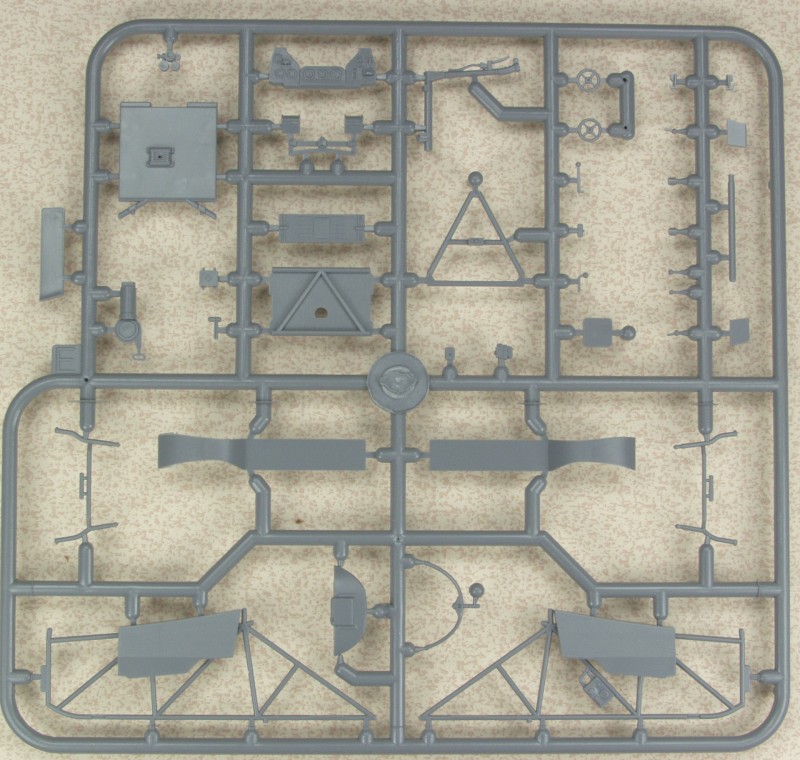
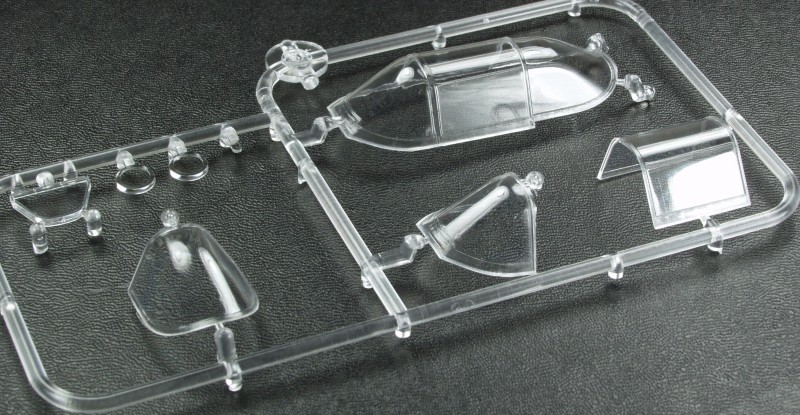
The kit includes some resin parts include some cockpit parts including the radiator, main gear wheels and tires, tail wheel and exhaust stacks. The parts are well done with no visible defects.
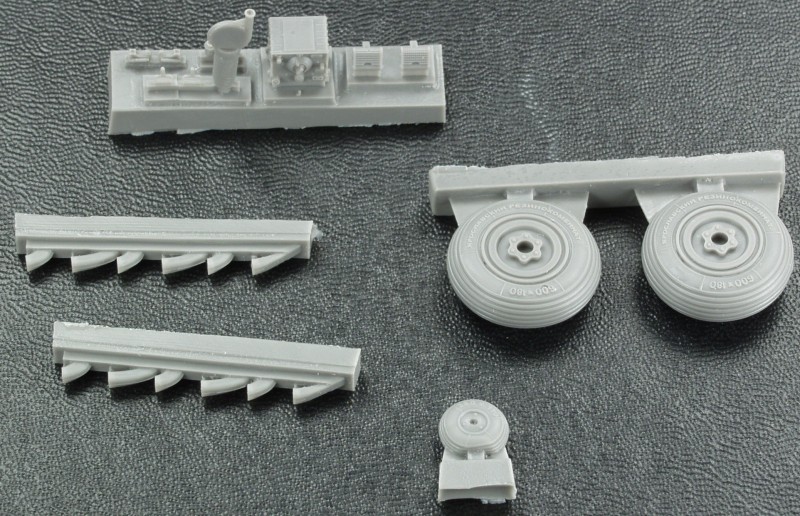
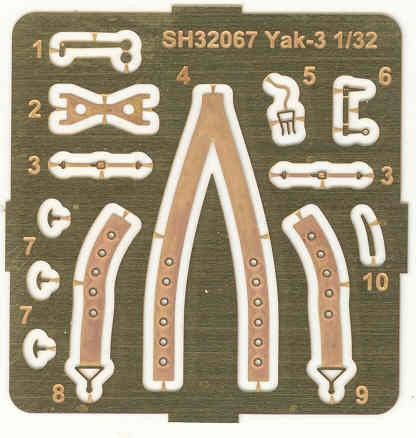
The decals are provided on two sheets, a smaller one with the national markings, rudder stripes, stencillings and fuel gages in two styles. Also included are decals for the instruments. The second sheet has the other graphics for the five aircraft supplied.
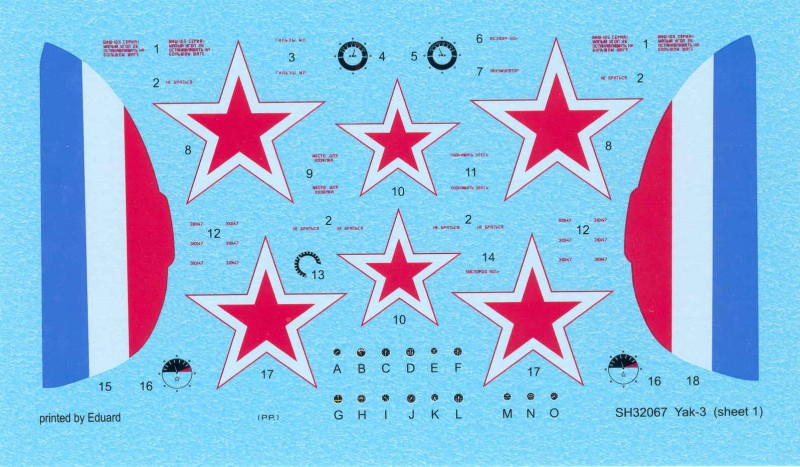
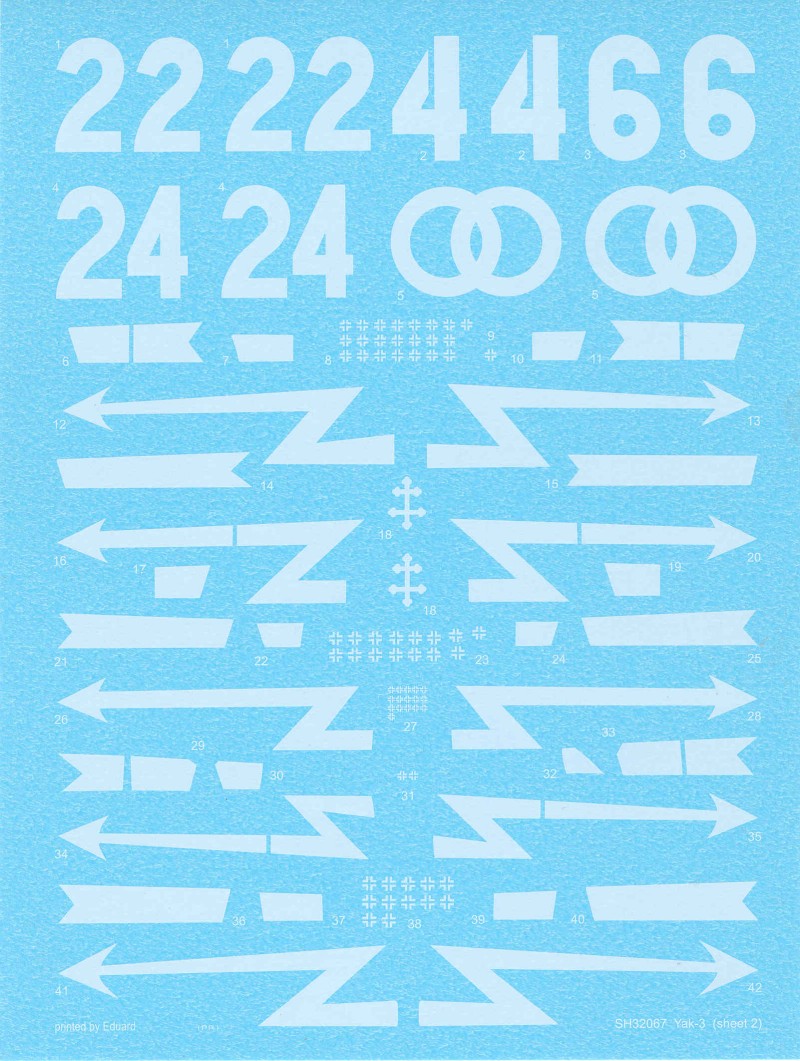
The instructions are first class, printed in color on glossy paper, an eighteen page booklet stapled at the spine. It has all the essentials; history, specifications, parts map, icon chart and a paint chart with Gunze numbers. There are 46 assembly steps all well detailed with color call outs throughout. Five full color profiles complete the booklet with painting and marking illustrations. An extremely well done set of instructions.
After Market Goodies
The only item I have opted for is the Eduard Zoom set (33162) to dress up the cockpit a bit.
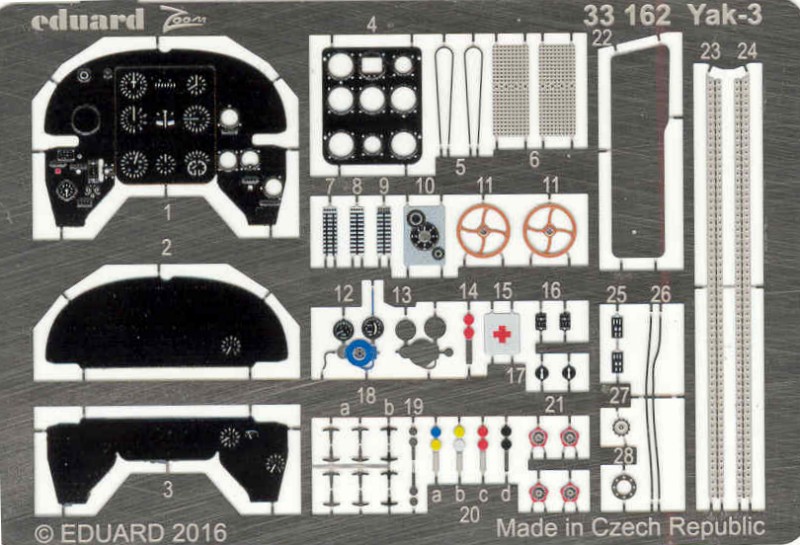
Conclusions
It is interesting to see just how far the quality of
short run kit producers has come in the last few years. A Special Hobby
kit from five years ago would look quite crude next to this one. While
I don't expect the parts fit to equal that of Tamiya it should be way
better than many other short run kits. There still are no alignment
pins so care must be exercised during assembly and test fitting before
gluing is still the order of the day. That said I think most modelers
other than rank beginners would have little trouble with this kit.
Links
to kit build or reviews Reviews can be found here, here and here References Famous Fighters of the Second World War by William Green Soviet Aces of World War 2 by Hugh Morgan